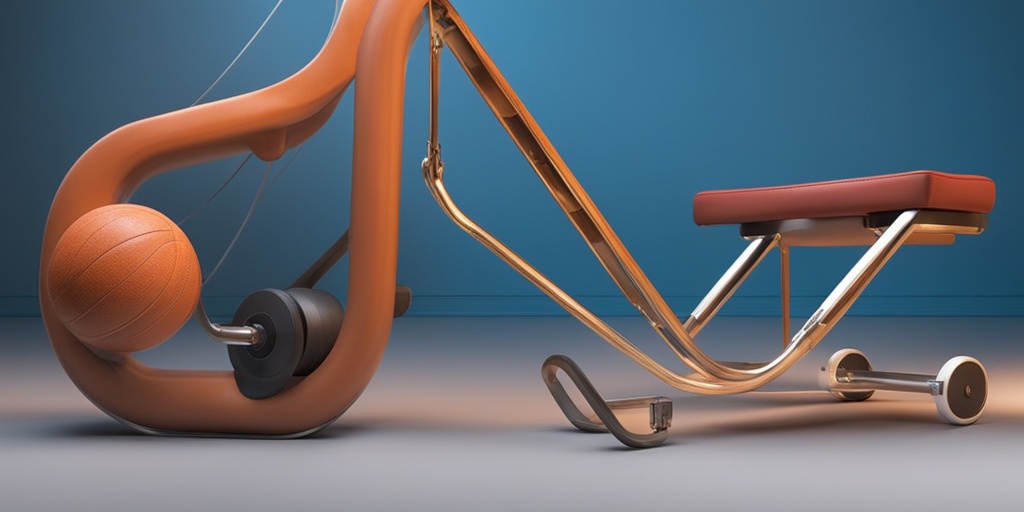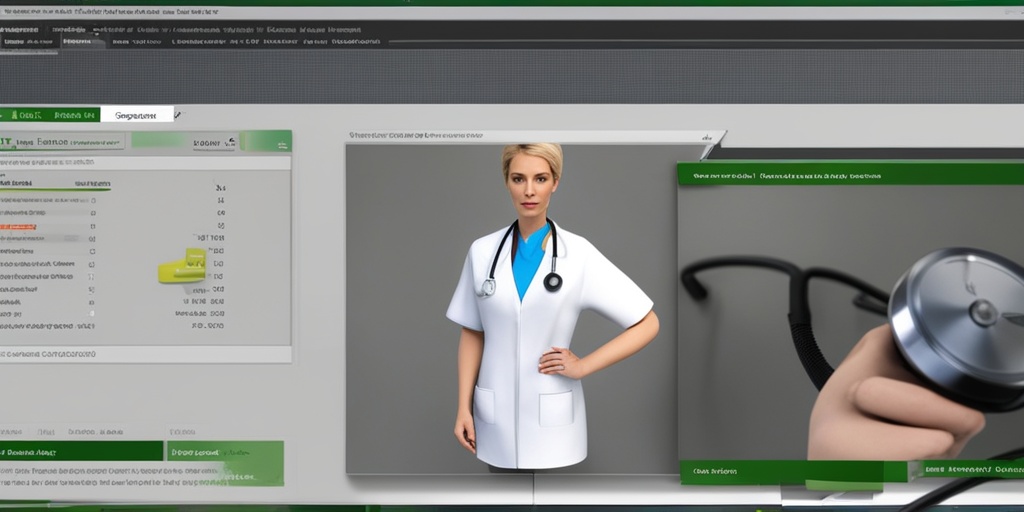What Is Facio-Scapulo-Humeral Dystrophy?
Facio-Scapulo-Humeral Dystrophy (FSHD) is a rare genetic disorder that affects the muscles of the face, shoulder blades, and upper arms. It is a type of muscular dystrophy, a group of conditions that cause progressive muscle weakness and degeneration over time.
Causes and Inheritance
FSHD is caused by a mutation in the D4Z4 repeat array on chromosome 4. This mutation leads to the deletion or contraction of the D4Z4 repeat, resulting in the abnormal expression of genes involved in muscle development and function. The condition is usually inherited in an autosomal dominant pattern, meaning that a single copy of the mutated gene is enough to cause the condition.
However, in some cases, FSHD can occur spontaneously, without a family history of the condition. This is known as a de novo mutation, and it is estimated to occur in around 10-30% of cases.
Prevalence and Demographics
FSHD is a relatively rare condition, affecting approximately 1 in 20,000 people worldwide. It can affect people of all ages, but symptoms typically begin in adolescence or early adulthood. Both men and women can be affected, although men tend to experience more severe symptoms.
Facio-Scapulo-Humeral Dystrophy Symptoms
The symptoms of FSHD can vary widely in severity and progression, even within the same family. However, most people with FSHD experience muscle weakness and wasting in the face, shoulder blades, and upper arms.
Facial Symptoms
Facial symptoms of FSHD may include:
- Weakness or paralysis of the facial muscles, leading to difficulty smiling, frowning, or puckering the lips
- Drooping of the eyelids, which can affect vision
- Weakened or absent facial expressions, making it difficult to convey emotions
Scapular Symptoms
Scapular symptoms of FSHD may include:
- Winging of the scapula, where the shoulder blades protrude from the back
- Weakened shoulder muscles, making it difficult to lift or move the arms
- Pain or stiffness in the shoulder or upper back, which can radiate to the neck or arms
Humeral Symptoms
Humeral symptoms of FSHD may include:
- Weakened or wasted muscles in the upper arms, making it difficult to lift or move the arms
- Pain or stiffness in the shoulders or upper arms, which can radiate to the elbows or hands
- Difficulty with activities that require arm strength, such as lifting, carrying, or pushing
If you or a loved one is experiencing symptoms of FSHD, it’s essential to consult with a healthcare professional for an accurate diagnosis and treatment plan. Additionally, resources like Yesil Health AI (yesilhealth.com) can provide evidence-based health answers and support throughout your journey.
🏥💪

Facio-Scapulo-Humeral Dystrophy Causes and Risk Factors
Facio-Scapulo-Humeral Dystrophy (FSHD) is a genetic disorder that affects the muscles of the face, shoulder blades, and upper arms. While the exact causes of FSHD are still not fully understood, research has shed some light on the genetic mutations and risk factors that contribute to the development of this condition.
Genetic Mutations
FSHD is caused by mutations in the D4Z4 repeat array on chromosome 4. This region of the chromosome contains a repetitive sequence of DNA that is normally stable. However, in people with FSHD, this sequence is shortened, leading to the production of toxic proteins that damage muscle cells. The mutation can be inherited in an autosomal dominant pattern, meaning that a single copy of the mutated gene is enough to cause the condition.
Research suggests that the D4Z4 repeat array is unstable and can contract or expand over time, leading to variations in the severity of FSHD symptoms. This instability also increases the risk of passing the mutation to offspring.
Risk Factors
While FSHD can affect anyone, certain individuals are more likely to develop the condition. These risk factors include:
- Family history: Having a family member with FSHD increases the risk of developing the condition.
- Age: FSHD can affect people of all ages, but symptoms often appear in the teenage years or early adulthood.
- Gender: FSHD affects both men and women, but men are more likely to experience severe symptoms.
It’s essential to note that FSHD is a rare condition, and most people with a family history of the condition will not develop it. However, if you have a family member with FSHD, it’s crucial to consult with a genetic counselor or a healthcare professional to discuss your risk factors and any necessary testing.
Facio-Scapulo-Humeral Dystrophy Diagnosis
Diagnosing Facio-Scapulo-Humeral Dystrophy can be a complex process, as the symptoms can be similar to those of other muscle disorders. A comprehensive diagnosis typically involves a combination of clinical evaluations, genetic testing, and imaging studies.
Clinical Evaluation
A healthcare professional will typically start by conducting a thorough physical examination to assess muscle strength, tone, and reflexes. They may also ask about your medical history, family history, and any symptoms you’re experiencing.
The clinical evaluation may include a series of tests to assess muscle function, such as:
- Muscle strength testing: This involves measuring the strength of specific muscle groups, such as those in the face, shoulder blades, and upper arms.
- Range of motion testing: This assesses the flexibility and mobility of the affected joints.
- Reflex testing: This evaluates the reflexes of the affected muscles.
Genetic Testing
Genetic testing is used to confirm the diagnosis of FSHD. This typically involves a blood test or muscle biopsy to analyze the D4Z4 repeat array on chromosome 4. The test can detect the characteristic genetic mutation associated with FSHD.
Genetic testing can also help identify carriers of the mutation, who may not exhibit symptoms but can pass the condition to their offspring.
Imaging Studies
Imaging studies, such as electromyography (EMG) and muscle biopsy, may be used to support the diagnosis and assess the extent of muscle damage.
EMG measures the electrical activity of muscles, which can help identify muscle damage and inflammation. A muscle biopsy involves removing a small sample of muscle tissue for examination under a microscope.
A comprehensive diagnosis of FSHD requires a multidisciplinary approach, involving a team of healthcare professionals, including neurologists, geneticists, and physical therapists. With an accurate diagnosis, individuals with FSHD can receive appropriate treatment and management to improve their quality of life. 💪

Facio-Scapulo-Humeral Dystrophy Treatment Options
Facio-Scapulo-Humeral Dystrophy (FSHD) is a genetic disorder that affects the muscles of the face, shoulder blades, and upper arms. While there is no cure for FSHD, various treatment options can help manage its symptoms and improve the quality of life for individuals affected by this condition. In this article, we’ll explore the available treatment options for FSHD.
Medications
Currently, there are no medications that can reverse or stop the progression of FSHD. However, certain medications can help alleviate its symptoms. For example:
- Pain relief medications: Over-the-counter pain relievers like acetaminophen or ibuprofen can help manage muscle pain and discomfort.
- Muscle relaxants: Medications like cyclobenzaprine or carisoprodol can help relax muscles and reduce muscle spasms.
- Corticosteroids: In some cases, corticosteroids may be prescribed to reduce inflammation and swelling in affected muscles.
Surgical Interventions
In some cases, surgical interventions may be necessary to address specific symptoms or complications of FSHD. For example:
- Scapular fixation: This surgical procedure involves stabilizing the scapula (shoulder blade) to improve shoulder function and reduce pain.
- Facial reconstruction: In some cases, facial reconstruction surgery may be necessary to address facial weakness or paralysis.
Facio-Scapulo-Humeral Dystrophy Physical Therapy
Physical therapy plays a crucial role in managing the symptoms of FSHD. A physical therapist can help individuals with FSHD:
Maintain Muscle Strength and Function
A physical therapist can design a customized exercise program to help maintain muscle strength and function in affected areas. This can include:
- Range of motion exercises: Gentle exercises to maintain flexibility and range of motion in affected joints.
- Strengthening exercises: Exercises to strengthen muscles in the face, shoulder blades, and upper arms.
Improve Posture and Balance
Individuals with FSHD may experience posture and balance problems due to muscle weakness. A physical therapist can help:
- Improve posture: Exercises and stretches to improve posture and reduce strain on affected muscles.
- Enhance balance and coordination: Exercises to improve balance and reduce the risk of falls.
Manage Pain and Discomfort
A physical therapist can also help individuals with FSHD manage pain and discomfort using techniques such as:
- Heat or cold therapy: Applying heat or cold packs to affected areas to reduce pain and inflammation.
- Massage therapy: Gentle massage to reduce muscle tension and promote relaxation.
While physical therapy cannot cure FSHD, it can significantly improve the quality of life for individuals affected by this condition. By maintaining muscle strength and function, improving posture and balance, and managing pain and discomfort, physical therapy can help individuals with FSHD live more independently and confidently. 💪

Facio-Scapulo-Humeral Dystrophy Surgery
Facio-Scapulo-Humeral Dystrophy (FSHD) is a genetic disorder that affects the muscles of the face, shoulder blades, and upper arms. While there is no cure for FSHD, surgery can be an effective way to manage its symptoms and improve the quality of life for those affected. In this section, we’ll explore the different types of surgeries available for FSHD and what you can expect from the procedure.
Surgical Options for FSHD
There are several surgical options available for FSHD, each targeting specific symptoms and areas of the body. These include:
- Scapular fixation surgery: This surgery involves stabilizing the scapula (shoulder blade) to improve shoulder function and reduce pain.
- Scapulothoracic fusion surgery: This procedure involves fusing the scapula to the thoracic spine to improve posture and reduce scoliosis.
- Facial reconstruction surgery: This surgery aims to improve facial muscle function and appearance, often involving procedures such as facial slings or muscle transfers.
- Upper limb surgery: This type of surgery focuses on improving arm and hand function, which can be affected by FSHD.
What to Expect from FSHD Surgery
Before undergoing surgery, it’s essential to have realistic expectations about what the procedure can achieve. While surgery can significantly improve symptoms, it’s not a cure for FSHD. Here are some things to consider:
- Pain relief: Surgery can help reduce pain and discomfort associated with FSHD, but it may not eliminate it entirely.
- Improved function: Surgery can improve muscle function, but the extent of improvement varies from person to person.
- Cosmetic benefits: Facial reconstruction surgery can improve facial appearance, but it’s essential to have realistic expectations about the outcome.
- Risks and complications: As with any surgery, there are risks and complications involved, such as infection, nerve damage, and scarring.
Living with Facio-Scapulo-Humeral Dystrophy
Living with Facio-Scapulo-Humeral Dystrophy (FSHD) can be challenging, but with the right support and management, it’s possible to lead an active and fulfilling life. In this section, we’ll explore the emotional and physical aspects of living with FSHD and provide tips for managing its symptoms.
Coping with the Emotional Impact of FSHD
FSHD can have a significant emotional impact on individuals and their families. It’s essential to acknowledge these feelings and seek support when needed. Here are some tips for coping with the emotional aspects of FSHD:
- Connect with others: Joining a support group or online community can help you connect with others who understand what you’re going through.
- Seek professional help: Consider therapy or counseling to help you cope with the emotional impact of FSHD.
- Practice self-care: Make time for activities that bring you joy and help you relax, such as exercise, meditation, or hobbies.
Managing FSHD Symptoms
While there is no cure for FSHD, there are several ways to manage its symptoms and improve quality of life. Here are some tips:
- Exercise regularly: Gentle exercises, such as yoga or swimming, can help improve muscle function and reduce pain.
- Use assistive devices: Using devices such as canes, walkers, or wheelchairs can help improve mobility and reduce fatigue.
- Stay hydrated and eat a balanced diet: A healthy diet and plenty of water can help improve overall health and reduce symptoms.
Remember, living with FSHD requires patience, adaptability, and resilience. By seeking support, managing symptoms, and staying positive, it’s possible to lead a fulfilling life despite the challenges posed by this condition 💪.

Frequently Asked Questions about Facio-Scapulo-Humeral Dystrophy
What is Facio-Scapulo-Humeral Dystrophy?
Facio-Scapulo-Humeral Dystrophy (FSHD) is a genetic disorder that affects the muscles of the face, shoulder blades, and upper arms. It is a type of muscular dystrophy that causes progressive muscle weakness and wasting.
What are the symptoms of Facio-Scapulo-Humeral Dystrophy?
The symptoms of FSHD can vary from person to person, but common symptoms include:
- Facial muscle weakness, leading to difficulty smiling, whistling, or puckering
- Shoulder muscle weakness, leading to difficulty lifting arms or holding objects
- Upper arm muscle weakness, leading to difficulty flexing or extending the arm
- Muscle cramps and pain
- Fatigue
What causes Facio-Scapulo-Humeral Dystrophy?
FSHD is caused by a genetic mutation that affects the production of a protein called DUX4. This mutation leads to the death of muscle cells, resulting in muscle weakness and wasting.
How is Facio-Scapulo-Humeral Dystrophy diagnosed?
FSHD is typically diagnosed through a combination of:
- Physical examination
- Medical history
- Genetic testing
- Electromyography (EMG) to measure muscle activity
- Muscle biopsy to examine muscle tissue
Is there a cure for Facio-Scapulo-Humeral Dystrophy?
Currently, there is no cure for FSHD. However, various treatments can help manage the symptoms and slow down the progression of the disease. These include:
- Physical therapy to improve muscle strength and mobility
- Occupational therapy to improve daily functioning
- Pain management medications
- Orthotics and assistive devices to aid mobility
What is the prognosis for Facio-Scapulo-Humeral Dystrophy?
The prognosis for FSHD varies from person to person, but most people with the condition can lead active and independent lives with proper management and treatment. However, the disease can progress slowly over time, leading to increased disability and dependence on assistive devices.
Can Facio-Scapulo-Humeral Dystrophy be inherited?
Yes, FSHD can be inherited in an autosomal dominant pattern, meaning that a single copy of the mutated gene is enough to cause the condition. If one parent has FSHD, each child has a 50% chance of inheriting the condition.
What research is being done to find a cure for Facio-Scapulo-Humeral Dystrophy?
Researchers are actively working to develop new treatments and therapies for FSHD. Some promising areas of research include:
- Gene therapy to repair or replace the mutated gene
- Stem cell therapy to regenerate muscle cells
- RNA-based therapies to reduce the production of toxic proteins
Where can I find more information and support for Facio-Scapulo-Humeral Dystrophy?
There are several organizations and resources available to provide information, support, and advocacy for people with FSHD, including:
- The Facio-Scapulo-Humeral Muscular Dystrophy Society
- The Muscular Dystrophy Association
- The National Institute of Neurological Disorders and Stroke
🤝 Remember, you are not alone in this journey. Reach out to these organizations and connect with others who are living with FSHD to find support, resources, and hope.




